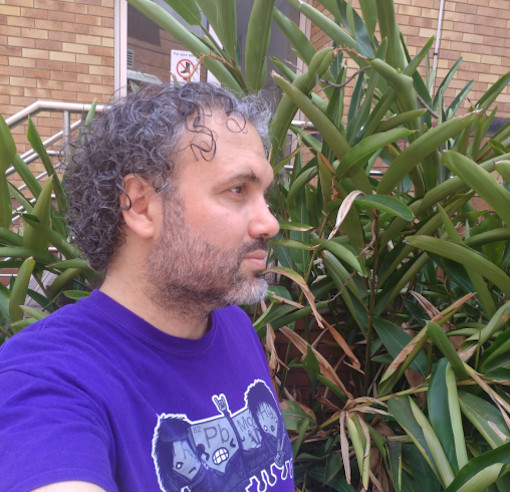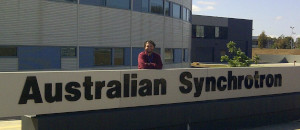About Me

Hi, my name is David Aragão
My main interests are structural biology, synchrotrons with its related beamline science, linux administration and using programming as a tool to improve research experiments.
My Experience
Protein Crystallographer
1998-2020
Major achivements
- Involvement in membrane protein work on GPCRs that led to the award of the Nobel Prize in Chemistry to Prof Brian Kobila
- Shining light into the electron transfer between cytochrome c and respiratory complex IV. This is part of one of the most important energy generation processes in celular life.
- Understanding a membrane kinase in incredible detail using both synchrotron and XFEL radiation.
- Proving that small membrane peptides could be solved by crystallography using lipidic cubic phase
Linux System Administrator
1995-2020
System administrator of 3 Virtual Private Servers (VPS) hosting more than 60 domain names since 2003 gave him extensive experience in cPanel/WHM hosting, troubleshooting operating systems, investigation breaches and closing insecurity from Apache webservers, EXIM email servers, DNS servers, Firewall, etc.
Attended and passed the demanding RH exams for:
Having been the de facto local System Administrator for the two Australian Synchrotron MX beamlines from 2012 to 2019. Here gained extenstive experience with virtual machines and linux kernel containers namely using the open source Proxmox Cluster software. Led the replacement of all physical machines running the crystallography beamlines to fully virtual between 2014 and 2018.
Society & Non-profit organisations
1996-2020
Some examples
- Active member in the Portuguese Free software association (2000, ANSOL)
- Member of the executive board for the undergraduate students union (1996, AEFCT)
- Member of the Pedagogic Council for FCT.UNL (1996-2000)
- Member of the executive board of young researchers association (2004/2005, ABIC)
- Chairman of the General Assembly for the portuguese younger researcheres association (2005/2006, ABIC)
- Treasurer of the Society of Crystallographers in Australia and New Zeeland (SCANZ, 2014/2016)
- Vice-President of the Society of Crystallographers in Australia and New Zeeland (SCANZ, 2017/2018)
- President of the Society of Crystallographers in Australia and New Zeeland (SCANZ, 2019/2020)
- Member of the winning bidding commitee to organize an IUCr in Australia.
Beamline / Instrument Scientist
2011-2020
In 2011 moved from a prestigious position as academic structural biologist (IEF-Marie Curie Fellow at Trinity Colleage Dublin) to a instrument scientist position in the Australian Synchrotron MX beamlines. 
Here in less than 6 months converted himself into a indispensable troubleshooter of hardware and software issues with attention to detail and heavy documentation writer of both of failures and of procedures being also strong assets. Taking very seriously quality control (QC) was always a major drive of his work. Heavily involvement on both software and design of the replacement of BLU-ICE with a microservice based beamline controls, hands on upgrade of optical elements (DCM for a microfocusing beamline), sample changers (SAM robots), project managing a new goniometer install (involved in design, manufacturing, installing and acceptance testing), detector upgrade (Eiger 16M) described in two publications. This position also allowed to improve on vital softskills like time management, team work, creative thinking and conflict resolution.
Programming
2001-2020
In 2013 was introduced to python by Andy Bulka (website, linkedin) first on a one full day a week for 6 weeks basic python training. Two years later a second one day a week 6 weeks training on advanced python including object oriented programming. That training together with extentive hands on work at Australian Synchrotron MX beamlines but also with learnings from the genius coder Nathan Mudie changed his view of the world forever. Now felt no longer just a user but a driver on using software to control and manipulate hardware to collect better diffraction data as well as use software to improve on data analysis.
Non exhaustive list of projects involvement in coding
- Attenuator wheel to control X-ray beam transmission at different energies (involved using Lambert–Beer law as well as control hardware via python and EPICS)
- Migration of autoprocessing software to a Kubernetes based docker containers
- Re-write of the python collection server logic to accomodate the migration from the old CCD based ADSC detectors to a Pixel array Eiger detector
- Futher develop a python beamline library that kept abstraction at the application level from the beamline instrument where it ran
- Involved on the design of the slow replacement of the monolith Blu-ICE to a microservices based ecosystem.
- Futher develop and maintain a QC based beamline setup GUI for delivering high quality beamline calibration to users.
- Implement diffraction rastering for sample centring at the Australian Synchrotron MX beamlines
25
years in high tech enviroments
10000
hours collecting at synchrotrons
10000
£ raised for research
projects(co-proposer)
5
countries that
lived and worked
My prior employers
Australian Nuclear Science Tchnology Organisation
ANSTO
Research and Development
Australian Synchrotron
AS
Research and Development
University of Limerick
UL
Research and Education
Faculdade de Cienticas e Tecnologia, Universidade Nova de Lisboa
FCT-UNL
Research and Education
Synchrotron Light Source Australia
SLSA
Research and Development
Trinity College Dublin
TCD
Research and Education
Instituto de Tecnologia Quimica e Biologica
ITQB
Research
Fundacao para a Ciencia e Tecnologia
